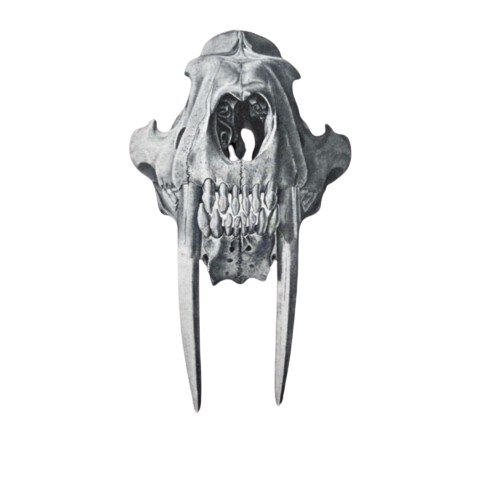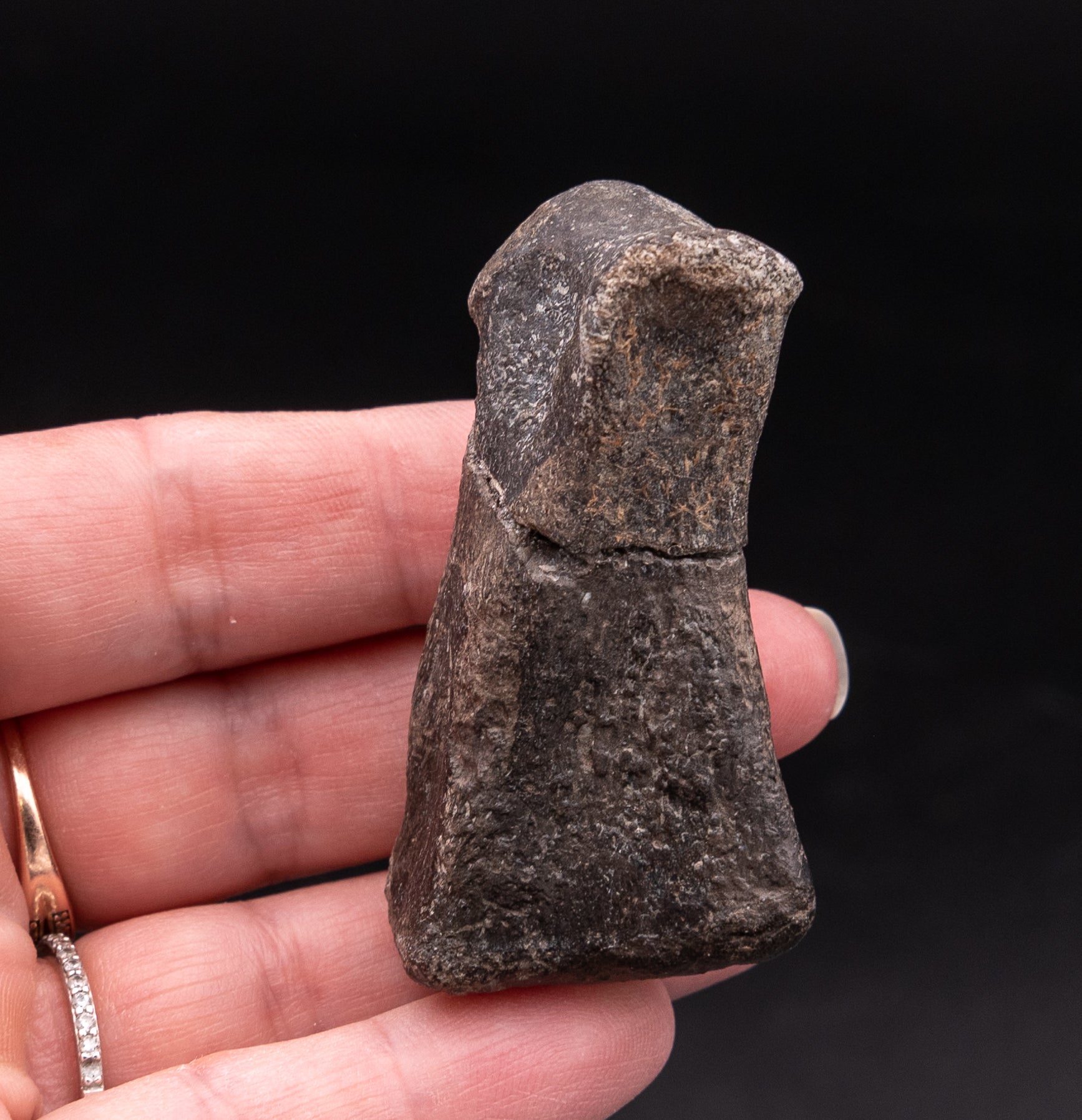
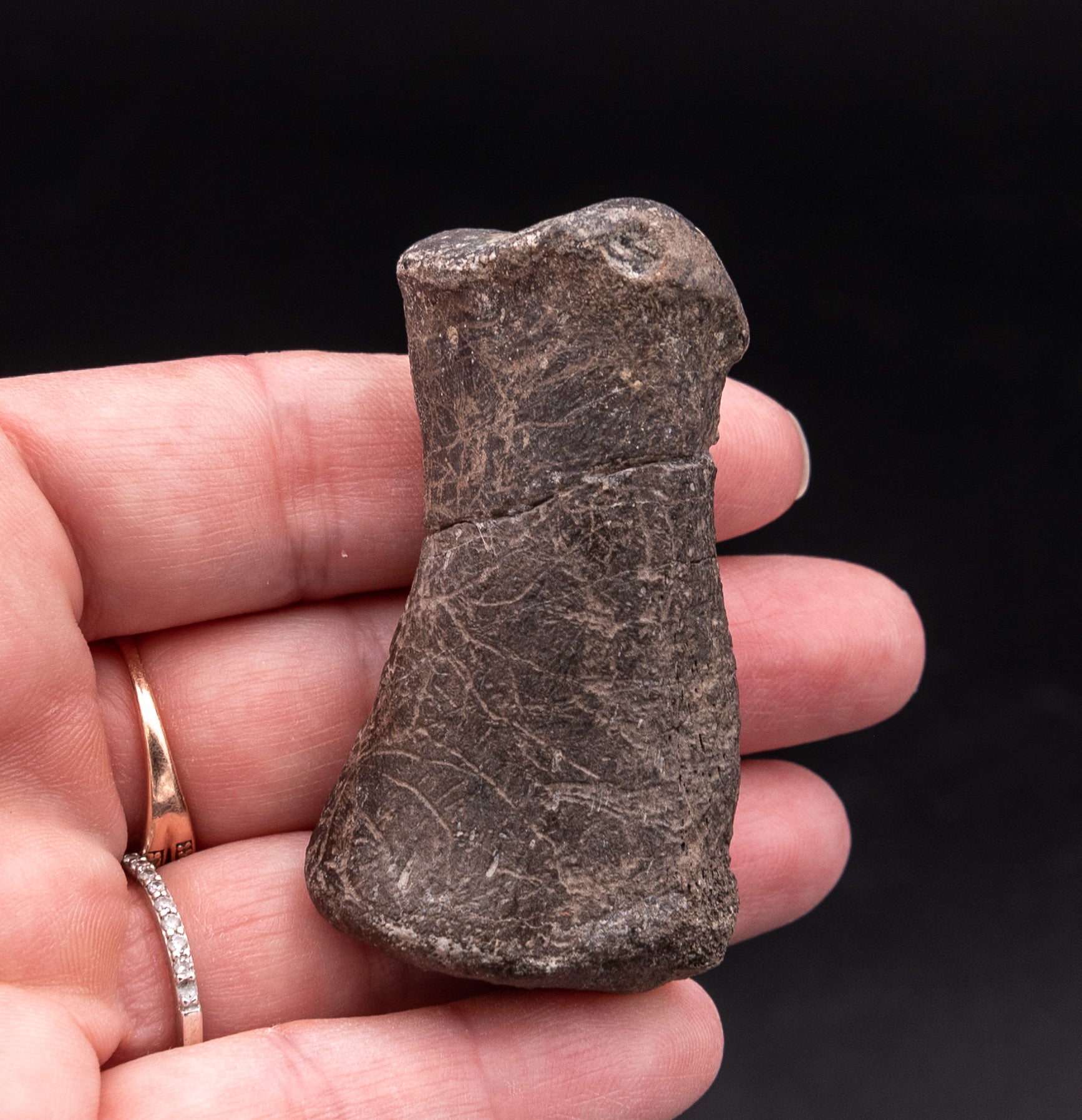
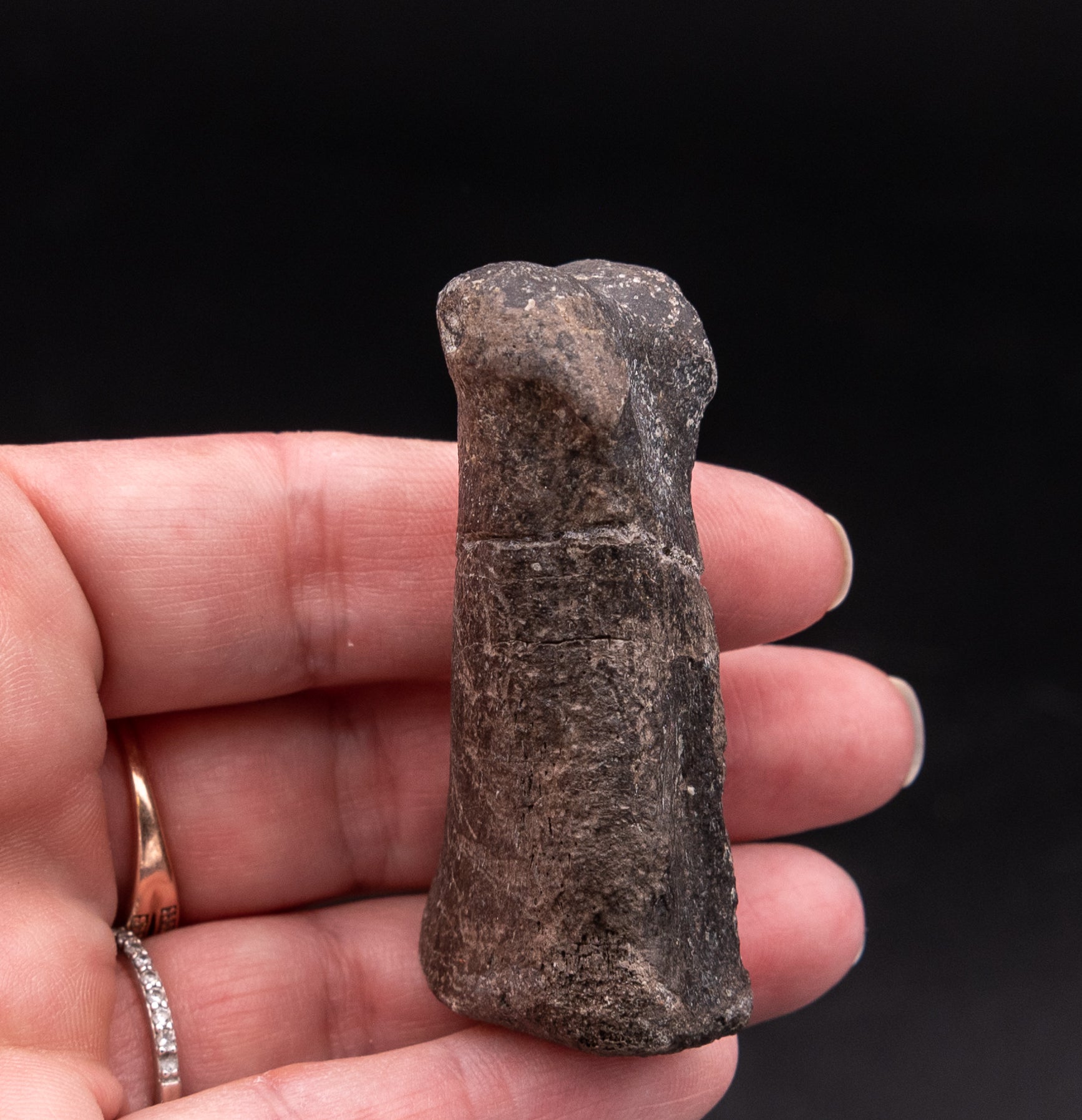
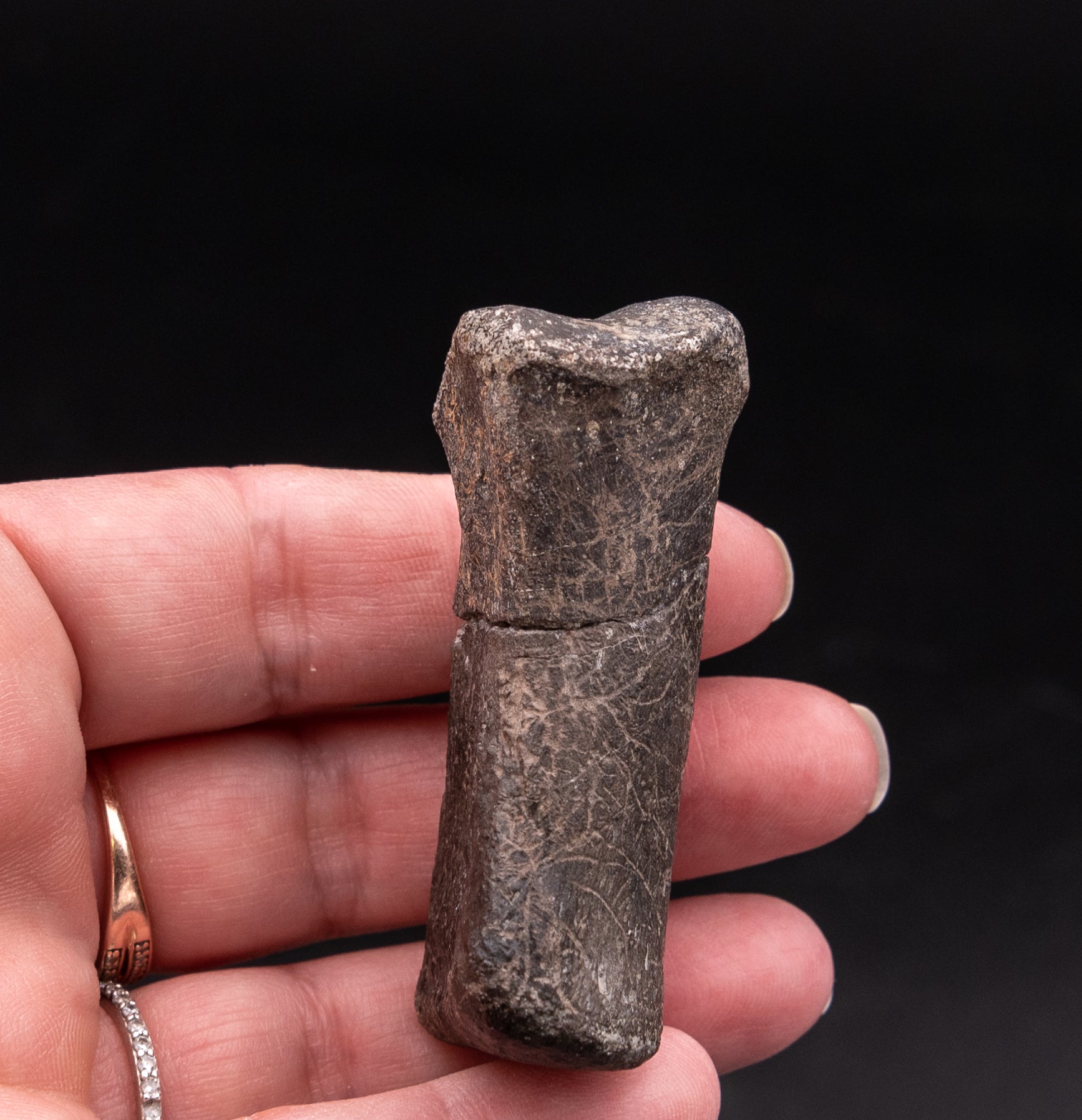
Maiasaura Dinosaur Toe Bone Two Medicine Formation
This toe bone is solid and has been expertly glued back together.
Maiasaura, a genus of large herbivorous hadrosaurid dinosaur, lived during the Late Cretaceous period about 76.7 million years ago. The name Maiasaura means "good mother lizard," derived from the Greek "maia" (μαία), meaning "mother," and the Latin "saura," meaning "lizard." This name was chosen because of the discovery of nests with eggs, embryos, and young dinosaurs, providing some of the first clear evidence that some dinosaurs cared for their young.
Fossils of Maiasaura have been found primarily in the Upper Missouri River area of Montana, USA, particularly in the Two Medicine Formation. This dinosaur is estimated to have been about 30 feet long and weighed around 3 tons as an adult. Maiasaura walked both on its hind legs and on all fours. It had a duck-billed snout, which it used to crop vegetation.
One of the most remarkable aspects of Maiasaura is the evidence of its social behavior. The nesting grounds indicate that these dinosaurs lived in large, organized groups. The nests were close together, suggesting a communal nesting site, and they contained egg clutches and remains of young of various ages. This indicates that Maiasaura returned to the same nesting grounds repeatedly and cared for their young after hatching, a behavior more commonly associated with birds and mammals. Maiasaura's discovery significantly impacted our understanding of dinosaur behavior, particularly regarding their care for offspring and social structures.
AGE
late Cretaceous
LOCATION
Teton County, Montana
FORMATION
Two Medicine
Size
2.35"
Choose options




